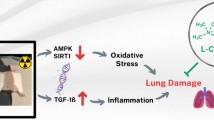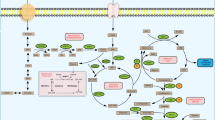Abstract
The purpose of study was to comparatively characterize the oxidative phosphorylation (OXPHOS) and function of respiratory chain in mitochondria in human gastric corpus mucosa undergoing transition from normal to cancer states and in human gastric cancer cell lines, MKN28 and MKN45. The tissue samples taken by endobiopsy and the cells were permeabilized by saponin treatment to assess mitochondrial function in situ by high-resolution oxygraphy. Compared to the control group of endobiopsy samples, the maximal capacity of OXPHOS in the cancer group was almost twice lower. The respiratory chain complex I-dependent respiration, normalized to complex II-dependent respiration, was reduced that suggests deficiency of complex I, but the respiratory control by ADP in the presence of succinate was increased. Similar changes were observed also in mucosa adjacent to cancer tissue. The respiratory capacity of MKN45 cells was higher than that of MKN28 cells, but both types of cells exhibited a deficiency of complex I of the respiratory chain which appears to be an intrinsic property of the cancer cells. In conclusion, human gastric cancer is associated with decreased respiratory capacity, deficiency of the respiratory complex I of mitochondria, and improved coupling of succinate oxidation to phosphorylation in tumor tissue and adjacent atrophic mucosa. Detection of these changes in endobiopsy samples may be of diagnostic value.



Similar content being viewed by others
References
Correa P (1992) Human gastric carcinogenesis: a multistep and multifactorial process—First American Cancer Society Award Lecture on Cancer Epidemiology and Prevention. Cancer Res 52:6735–6740
Correa P (2004) The biological model of gastric carcinogenesis. IARC Scientific Publication, pp 301–310
Warburg O (1956) On the origin of cancer cells. Science 123:309–314
Weinhouse S (1956) On respiratory impairment in cancer cells. Science 124:267–269
Zu XL, Guppy M (2004) Cancer metabolism: facts, fantasy, and fiction. Biochem Biophys Res Commun 313:459–465
Moreno-Sánchez R, Rodríguez-Enríquez S, Saavedra E et al (2009) The bioenergetics of cancer: is glycolysis the main ATP supplier in all tumor cells? BioFactors 35:209–225. doi:10.1002/biof.31
Rodríguez-Enríquez S, Torres-Márquez ME, Moreno-Sánchez R (2000) Substrate oxidation and ATP supply in AS-30D hepatoma cells. Arch Biochem Biophys 375:21–30. doi:10.1006/abbi.1999.1582
Fogal V, Richardson AD, Karmali PP et al (2010) Mitochondrial p32 protein is a critical regulator of tumor metabolism via maintenance of oxidative phosphorylation. Mol Cell Biol 30:1303–1318. doi:10.1128/MCB.01101-09
Gough DJ, Corlett A, Schlessinger K et al (2009) Mitochondrial STAT3 supports Ras-dependent oncogenic transformation. Science 324:1713–1716. doi:10.1126/science.1171721
Moreno-Sánchez R, Rodríguez-Enríquez S, Marín-Hernández A, Saavedra E (2007) Energy metabolism in tumor cells. FEBS J 274:1393–1418. doi:10.1111/j.1742-4658.2007.05686.x
Sonveaux P, Végran F, Schroeder T et al (2008) Targeting lactate-fueled respiration selectively kills hypoxic tumor cells in mice. J Clin Invest 118:3930–3942. doi:10.1172/JCI36843
Tomitsuka E, Kita K, Esumi H (2010) The NADH-fumarate reductase system, a novel mitochondrial energy metabolism, is a new target for anticancer therapy in tumor microenvironments. Ann N Y Acad Sci 1201:44–49. doi:10.1111/j.1749-6632.2010.05620.x
Morrish F, Isern N, Sadilek M et al (2009) c-Myc activates multiple metabolic networks to generate substrates for cell-cycle entry. Oncogene 28:2485–2491. doi:10.1038/onc.2009.112
Gruno M, Peet N, Tein A et al (2008) Atrophic gastritis: deficient complex I of the respiratory chain in the mitochondria of corpus mucosal cells. J Gastroenterol 43:780–788. doi:10.1007/s00535-008-2231-4
Gruno M, Peet N, Seppet E et al (2006) Oxidative phosphorylation and its coupling to mitochondrial creatine and adenylate kinases in human gastric mucosa. Am J Physiol Regul Integr Comp Physiol 291:R936–R946. doi:10.1152/ajpregu.00162.2006
Dixon MF, Genta RM, Yardley JH, Correa P (1996) Classification and grading of gastritis. The updated Sydney System. International workshop on the histopathology of gastritis, Houston 1994. Am J Surg Pathol 20:1161–1181
Peetsalu A, Maaroos HI, Sipponen P, Peetsalu M (1991) Long-term effect of vagotomy on gastric mucosa and Helicobacter pylori in duodenal ulcer patients. Scand J Gastroenterol Suppl 186:77–83
World Medical Association (1997) Declaration of Helsinki. Recommendations guiding physicians in biomedical research involving human subjects. Cardiovasc Res 35:2–3
Motoyama T, Hojo H, Watanabe H (1986) Comparison of seven cell lines derived from human gastric carcinomas. Acta Pathol Jpn 36:65–83
Eimre M, Paju K, Pelloux S et al (2008) Distinct organization of energy metabolism in HL-1 cardiac cell line and cardiomyocytes. Biochim Biophys Acta 1777:514–524. doi:10.1016/j.bbabio.2008.03.019
Lim HY, Ho QS, Low J et al (2011) Respiratory competent mitochondria in human ovarian and peritoneal cancer. Mitochondrion 11:437–443. doi:10.1016/j.mito.2010.12.015
Hawkins BJ, Levin MD, Doonan PJ et al (2010) Mitochondrial complex II prevents hypoxic but not calcium- and proapoptotic Bcl-2 protein-induced mitochondrial membrane potential loss. J Biol Chem 285:26494–26505. doi:10.1074/jbc.M110.143164
Gellerich FN, Deschauer M, Chen Y et al (2002) Mitochondrial respiratory rates and activities of respiratory chain complexes correlate linearly with heteroplasmy of deleted mtDNA without threshold and independently of deletion size. Biochim Biophys Acta 1556:41–52
Rustin P, Chretien D, Bourgeron T et al (1991) Assessment of the mitochondrial respiratory chain. Lancet 338:60
Vahsen N, Candé C, Brière J-J et al (2004) AIF deficiency compromises oxidative phosphorylation. EMBO J 23:4679–4689. doi:10.1038/sj.emboj.7600461
Yin G-Y, Zhang W-N, Shen X-J et al (2003) Ultrastructure and molecular biological changes of chronic gastritis, gastric cancer and gastric precancerous lesions: a comparative study. World J Gastroenterol 9:851–857
Matoba S, Kang J-G, Patino WD et al (2006) p53 regulates mitochondrial respiration. Science 312:1650–1653. doi:10.1126/science.1126863
Levine AJ, Feng Z, Mak TW et al (2006) Coordination and communication between the p53 and IGF-1-AKT-TOR signal transduction pathways. Genes Dev 20:267–275. doi:10.1101/gad.1363206
Kondoh H, Lleonart ME, Gil J et al (2005) Glycolytic enzymes can modulate cellular life span. Cancer Res 65:177–185
Matsuhashi N, Saio M, Matsuo A et al (2004) Expression of p53 protein as a predictor of the response to 5-fluorouracil and cisplatin chemotherapy in human gastrointestinal cancer cell lines evaluated with apoptosis by use of thin layer collagen gel. Int J Oncol 24:807–813
Wang F, Liu J, Robbins D et al (2011) Mutant p53 exhibits trivial effects on mitochondrial functions which can be reactivated by ellipticine in lymphoma cells. Apoptosis 16:301–310. doi:10.1007/s10495-010-0559-8
Atsumi T, Kato K, Uno K et al (2007) Pathophysiological role of the activation of p38 mitogen-activated protein kinases in poorly differentiated gastric cancer. Pathol Int 57:635–644. doi:10.1111/j.1440-1827.2007.02152.x
Fan M, Rhee J, St-Pierre J et al (2004) Suppression of mitochondrial respiration through recruitment of p160 myb binding protein to PGC-1alpha: modulation by p38 MAPK. Genes Dev 18:278–289. doi:10.1101/gad.1152204
Cuezva JM, Krajewska M, de Heredia ML et al (2002) The bioenergetic signature of cancer: a marker of tumor progression. Cancer Res 62:6674–6681
Cuezva JM, Ortega AD, Willers I et al (2009) The tumor suppressor function of mitochondria: translation into the clinics. Biochim Biophys Acta 1792:1145–1158. doi:10.1016/j.bbadis.2009.01.006
Wang X, Moraes CT (2011) Increases in mitochondrial biogenesis impair carcinogenesis at multiple levels. Mol Oncol 5:399–409. doi:10.1016/j.molonc.2011.07.008
Simonnet H, Demont J, Pfeiffer K et al (2003) Mitochondrial complex I is deficient in renal oncocytomas. Carcinogenesis 24:1461–1466. doi:10.1093/carcin/bgg109
Bonora E, Porcelli AM, Gasparre G et al (2006) Defective oxidative phosphorylation in thyroid oncocytic carcinoma is associated with pathogenic mitochondrial DNA mutations affecting complexes I and III. Cancer Res 66:6087–6096. doi:10.1158/0008-5472.CAN-06-0171
Boitier E, Merad-Boudia M, Guguen-Guillouzo C et al (1995) Impairment of the mitochondrial respiratory chain activity in diethylnitrosamine-induced rat hepatomas: possible involvement of oxygen free radicals. Cancer Res 55:3028–3035
Griffiths EA, Pritchard SA, Valentine HR et al (2007) Hypoxia-inducible factor-1alpha expression in the gastric carcinogenesis sequence and its prognostic role in gastric and gastro-oesophageal adenocarcinomas. Br J Cancer 96:95–103. doi:10.1038/sj.bjc.6603524
Griffiths EA, Pritchard SA, McGrath SM et al (2008) Hypoxia-associated markers in gastric carcinogenesis and HIF-2alpha in gastric and gastro-oesophageal cancer prognosis. Br J Cancer 98:965–973. doi:10.1038/sj.bjc.6604210
Ralph SJ, Rodríguez-Enríquez S, Neuzil J et al (2010) The causes of cancer revisited: “mitochondrial malignancy” and ROS-induced oncogenic transformation—why mitochondria are targets for cancer therapy. Mol Aspects Med 31:145–170. doi:10.1016/j.mam.2010.02.008
Barrientos A, Moraes CT (1999) Titrating the effects of mitochondrial complex I impairment in the cell physiology. J Biol Chem 274:16188–16197
Brandon M, Baldi P, Wallace DC (2006) Mitochondrial mutations in cancer. Oncogene 25:4647–4662. doi:10.1038/sj.onc.1209607
Lemarie A, Grimm S (2011) Mitochondrial respiratory chain complexes: apoptosis sensors mutated in cancer? Oncogene 30:3985–4003. doi:10.1038/onc.2011.167
Baracca A, Chiaradonna F, Sgarbi G et al (2010) Mitochondrial complex I decrease is responsible for bioenergetic dysfunction in K-ras transformed cells. Biochim Biophys Acta 1797:314–323. doi:10.1016/j.bbabio.2009.11.006
Yamamoto F, Perucho M (1984) Activation of a human c-K-ras oncogene. Nucleic Acids Res 12:8873–8885
Hu Y, Lu W, Chen G et al (2012) K-ras(G12V) transformation leads to mitochondrial dysfunction and a metabolic switch from oxidative phosphorylation to glycolysis. Cell Res 22:399–412. doi:10.1038/cr.2011.145
Weinberg F, Hamanaka R, Wheaton WW et al (2010) Mitochondrial metabolism and ROS generation are essential for Kras-mediated tumorigenicity. Proc Natl Acad Sci USA 107:8788–8793. doi:10.1073/pnas.1003428107
Chiaradonna F, Sacco E, Manzoni R et al (2006) Ras-dependent carbon metabolism and transformation in mouse fibroblasts. Oncogene 25:5391–5404. doi:10.1038/sj.onc.1209528
Mitsushita J, Lambeth JD, Kamata T (2004) The superoxide-generating oxidase Nox1 is functionally required for Ras oncogene transformation. Cancer Res 64:3580–3585. doi:10.1158/0008-5472.CAN-03-3909
Komatsu D, Kato M, Nakayama J et al (2008) NADPH oxidase 1 plays a critical mediating role in oncogenic Ras-induced vascular endothelial growth factor expression. Oncogene 27:4724–4732. doi:10.1038/onc.2008.102
Arrington DD, Van Vleet TR, Schnellmann RG (2006) Calpain 10: a mitochondrial calpain and its role in calcium-induced mitochondrial dysfunction. Am J Physiol Cell Physiol 291:C1159–C1171. doi:10.1152/ajpcell.00207.2006
Ralph SJ, Rodríguez-Enríquez S, Neuzil J, Moreno-Sánchez R (2010) Bioenergetic pathways in tumor mitochondria as targets for cancer therapy and the importance of the ROS-induced apoptotic trigger. Mol Aspects Med 31:29–59. doi:10.1016/j.mam.2009.12.006
Acknowledgments
This study was supported by Grant no. 7117 of the Estonian Science Foundation and Grant 0182549s03 of the Estonian Ministry of Education and Research. The authors thank Mrs Ellen Gvozdkova for technical assistance. A.H. is K. Albin Johansson Research Professor of the Foundation for the Finnish Cancer Institute.
Author information
Authors and Affiliations
Corresponding author
Rights and permissions
About this article
Cite this article
Puurand, M., Peet, N., Piirsoo, A. et al. Deficiency of the complex I of the mitochondrial respiratory chain but improved adenylate control over succinate-dependent respiration are human gastric cancer-specific phenomena. Mol Cell Biochem 370, 69–78 (2012). https://doi.org/10.1007/s11010-012-1399-3
Received:
Accepted:
Published:
Issue Date:
DOI: https://doi.org/10.1007/s11010-012-1399-3




